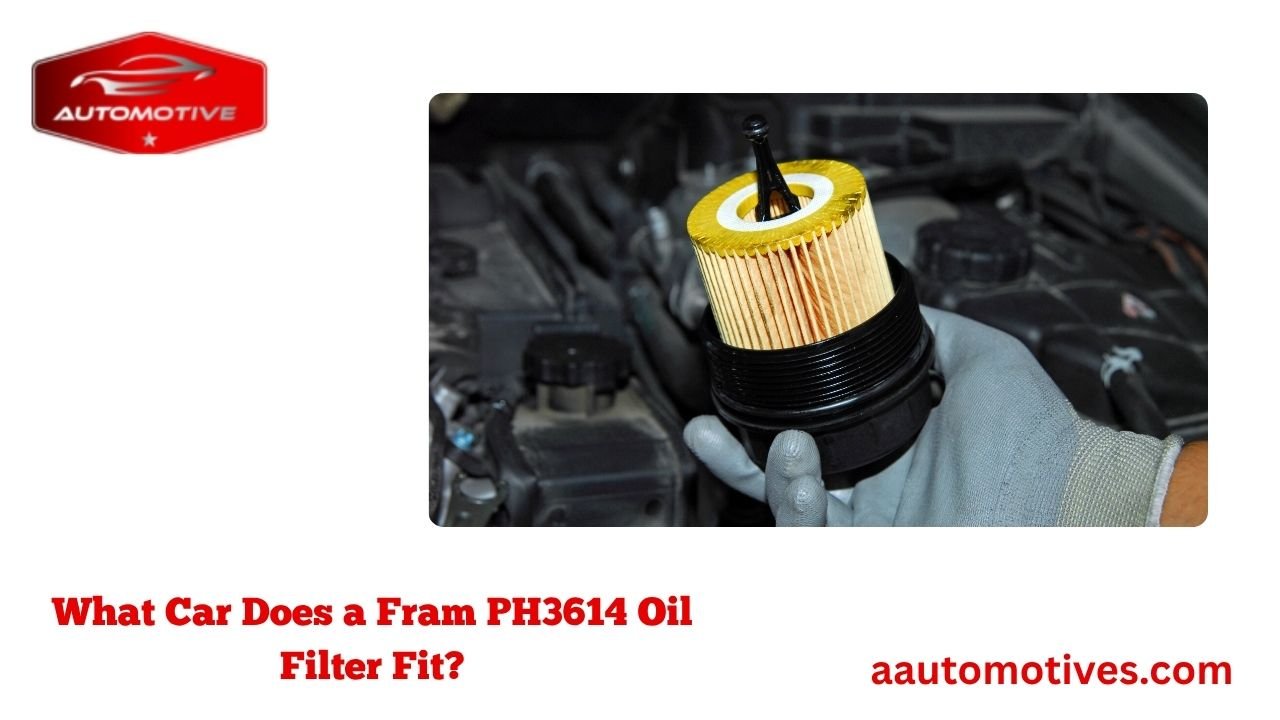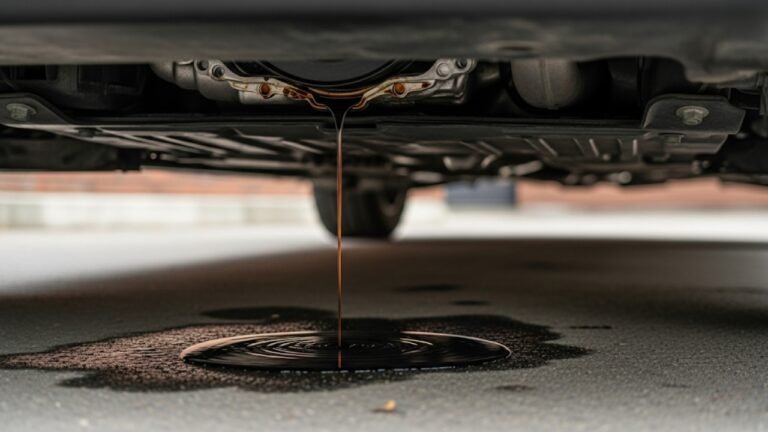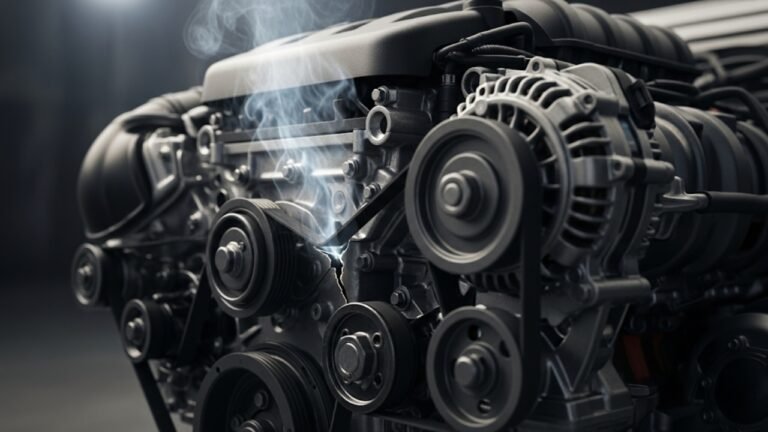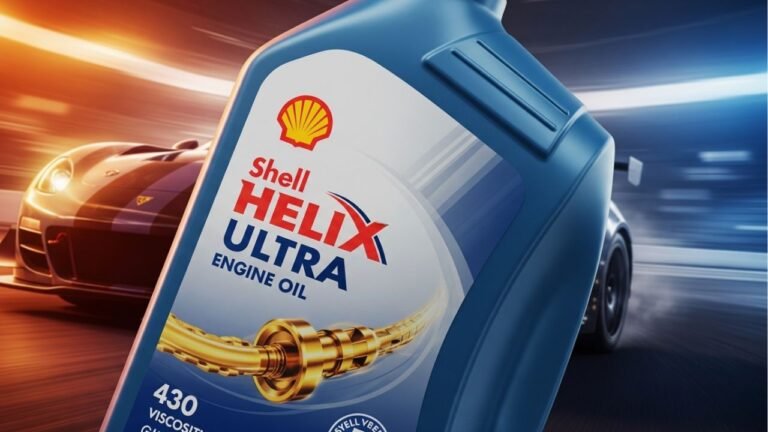What Car Does a Fram PH3614 Oil Filter Fit?

If you’ve ever popped the hood of your car and stared at the engine wondering what that Fram PH3614 oil filter is doing there, you’re not alone. I’ve been there too. One Saturday morning, I was changing the oil in my dad’s old pickup, and I grabbed the filter—yep, it was the PH3614. But when I went online to check if I could use the same one for my own car, I found more confusion than answers. So today, let’s fix that. Let’s have a real conversation, from one driver to another, about what cars this oil filter fits, why it matters, and how to make sense of it all.
Why Oil Filters Matter More Than You Think

Before we dive into what cars the Fram PH3614 fits, let’s talk about why oil filters even matter. Think of your car’s engine as its heart. The oil? That’s the blood. Now, you wouldn’t want that blood running through your veins full of dirt, right? That’s where the oil filter steps in. It keeps all the nasty stuff—metal shavings, carbon, sludge—out of the engine so it runs smooth and lives longer.
The Fram PH3614 isn’t just a random number. It’s one of the most popular oil filters out there, known for fitting a wide variety of vehicles and being easy on the wallet. But that doesn’t mean you should just slap it onto any car. It has a very specific fitment range, and using the wrong filter can lead to leaks, pressure issues, or even engine damage.
Here’s why this specific filter gets a lot of attention:
It’s compact and fits tight spaces
Built for durability and decent filtering capacity
Works well with both conventional and synthetic oil
Has an anti-drain back valve to prevent dry starts
But the question still stands: what car does a Fram PH3614 oil filter fit? Let’s break it down.
Popular Cars That Use the Fram PH3614
To make things easier, let’s put the vehicle compatibility into a table before we go deeper into each category. This way, if you’re just here for a quick answer, you’ve got it.
| Make | Models (varies by year) | Engine Types |
|---|---|---|
| Ford | Ranger, Escort, Focus, Taurus | 2.0L, 2.5L, 3.0L |
| Mazda | B-Series, Protegé, 626 | 2.0L, 2.2L, 2.5L |
| Chrysler | Sebring, PT Cruiser | 2.4L |
| Hyundai | Elantra, Tiburon, Sonata | 2.0L, 2.4L |
| Kia | Spectra, Sportage, Optima | 2.0L, 2.4L |
| Mitsubishi | Eclipse, Galant, Lancer | 2.0L, 2.4L |
| Toyota | Echo, Yaris (some older models) | 1.5L |
Let’s now take a ride through each of these brands and explore why the PH3614 oil filter works with these vehicles.
Ford and the Fram PH3614 – A Longstanding Relationship
Let’s start with Ford because, well, they’re classic. If you own an older Ford Ranger, Escort, or even a Focus, chances are high that the Fram PH3614 is your go-to filter. Ford used a certain design standard in their 4-cylinder and V6 engines throughout the late ’80s, ’90s, and early 2000s, which made this filter a perfect fit.
Personally, I helped a friend swap this filter onto his 2003 Ford Taurus once. It was almost too easy. The filter screwed on snug, didn’t leak, and after a quick test drive, everything ran perfectly. The anti-drain back valve made sure the engine started up smooth even after sitting in the cold overnight.
What makes Ford vehicles such a good match? Here’s the breakdown:
The thread size on these engines matches exactly
The gasket diameter fits the mounting pad without gaps
There’s enough clearance around the oil filter mount
But don’t assume all Fords use this. Many newer models have switched to cartridge-style filters or different threads. Always double-check before installing!
Mazda and Fram: An Underrated Duo
Now let’s talk Mazda. If you’ve ever driven a Protegé, you know how zippy and fun those little sedans are. I used to own a ‘97 Mazda 626, and oil changes were my weekend therapy. I always went with the Fram PH3614, and it never let me down.
Mazda and Ford used to share a lot of engine designs, which is why you’ll see this filter work for both brands. The 2.0L and 2.5L engines in cars like the B2300 truck or MX-6 line up perfectly with this filter’s specs.
What’s more, these engines tend to run hot, especially in summer. The PH3614 has a durable metal body and decent burst strength, meaning it won’t give out under pressure. That’s peace of mind you can feel on a road trip.
Chrysler, Dodge, and the PH3614 Match
If you’re rolling in a PT Cruiser or an older Sebring, you might not be thinking too much about oil filters. But here’s the thing—those 2.4L Chrysler engines are picky. They need good flow but tight filtration, and the PH3614 fits the bill.
I worked on a neighbor’s PT Cruiser once. He’d been using a cheap knock-off filter, and you could hear the difference after switching to a Fram. The idle was smoother, and the oil stayed cleaner between changes. It’s those small details that keep your engine ticking.
What makes the Fram PH3614 a solid choice here is:
Reliable filtering of small particles
Easy install even in tight engine bays
Affordable without compromising quality
These cars aren’t known for reliability, so choosing a solid filter like the PH3614 helps you squeeze more life out of them.
Hyundai and Kia – The PH3614 Goes Global
Let’s take a little trip across the Pacific. If you’re driving an older Hyundai Elantra, Sonata, or a Kia Spectra, there’s a good chance your car takes the Fram PH3614. These Korean automakers often used similar engine platforms that worked well with this filter.
I remember doing an oil change for my cousin’s 2004 Hyundai Tiburon. The 2.0L Beta engine took the PH3614 perfectly. What I liked most was that the filter didn’t make a mess during removal—it had that anti-drain back valve, so oil didn’t spill all over the place. That might sound minor, but trust me, when you’re lying under a car, dry shirts matter.
Why it fits:
Compatible thread pitch and size
Right flow rate for smaller displacement engines
Holds up well under synthetic oil
Mitsubishi – A Perfect Fit for More Than One Model
Last but definitely not least in this half of our article—Mitsubishi. These guys really knew how to build engines that love the Fram PH3614. From the Eclipse to the Galant and even the Lancer, this filter is practically a drop-in.
Back in college, I had a buddy with a Lancer OZ Rally Edition. Every 5,000 miles, like clockwork, he’d pop off the Fram PH3614, screw on a fresh one, and pour in some 10W-30. That car saw 200,000 miles and never missed a beat. Coincidence? Maybe. Good maintenance? Definitely.
Mitsubishi engines tend to rev high and heat up fast, especially in older models. The PH3614’s high-pressure endurance and decent micron rating help keep things clean and efficient under those rev-happy conditions.
Toyota – Surprising Compatibility with the Fram PH3614
You might not expect it, but a few older Toyota models also use the Fram PH3614 oil filter. Specifically, the early 2000s Toyota Echo and some trims of the Yaris with 1.5L engines are on that list.
Now, Toyotas are famous for their bulletproof reliability, but even they need clean oil to stay on the road. I helped my aunt with her 2002 Echo a few years back, and when I cross-referenced the OEM filter, it turned out the PH3614 was an exact match.
What I noticed after using the PH3614 was how quiet the engine sounded after an oil change. No clanking, no hard starts. It just purred like it was fresh off the lot. That’s the magic of a good oil filter—it may not look like much, but it keeps everything running smooth beneath the surface.
Why Toyota owners choose PH3614:
Direct fitment on older subcompacts
Reliable pressure control
Long-lasting seal and gasket durability
If you’re driving one of these smaller, fuel-efficient Toyotas and still doing your own oil changes (major respect if you are), the Fram PH3614 might be your best low-cost, high-trust option.
Fram PH3614 Specs – Know Your Filter Inside Out
Let’s get into the technical side for just a moment, because knowing exactly what’s under the hood matters. If you’re like me, you like tools and parts that work as advertised—nothing more frustrating than buying a filter only to realize it doesn’t fit or can’t handle your driving habits.
Here are the Fram PH3614 oil filter specifications you should know:
Thread Size: 3/4-16
Gasket Diameter: 2.46” (OD), 2.21” (ID)
Height: 3.34 inches
Burst Pressure: 200 psi
Micron Rating: ~20 microns (nominal)
Anti-Drain Back Valve: Yes (silicone or nitrile depending on version)
These numbers might seem boring, but they make a huge difference. For example, that 3/4-16 thread size? That’s why it fits so many domestic and Asian engines. The burst pressure is more than enough for normal use—even if you’re driving a little hard or using full synthetic oil.
If you’re using high-mileage oils or doing extended drain intervals, you’ll want something you can trust. And that’s where the PH3614 earns its spot in so many garages.
Common Mistakes When Choosing an Oil Filter
Now let’s talk about what not to do, because I’ve made a few of these mistakes myself and paid for it in greasy hands and lost weekends. One time, I bought a filter that looked just like the PH3614, but it had a slightly different gasket size. Guess what happened? Leaked oil. Everywhere.
Here are a few common mistakes folks make when picking an oil filter:
Assuming all filters are universal – They’re not. Always check threads, gasket size, and height.
Using a longer filter – A longer filter doesn’t mean better performance. It might hit engine parts or hoses.
Skipping the anti-drain back valve – This is essential for cold starts and short-trip driving.
Not tightening the filter properly – Too loose? It leaks. Too tight? It’s a nightmare to remove.
One tip I’ve learned: Hand-tighten plus a quarter turn with a wrench. That’s usually perfect. And always lube the gasket with a little oil before installing it.
Being careful with these small steps will save you from big headaches later.
Maintenance Tips for Long-Term Engine Health
Oil changes aren’t glamorous, but they’re the cheapest form of car insurance you can buy. And using the right oil filter—like the Fram PH3614—is a big part of that.
Here are some quick, battle-tested tips from years of driveway oil changes:
Change your oil every 3,000 to 5,000 miles if you’re using conventional oil
If using synthetic, stretch to 7,000 miles, but don’t push beyond that unless you test your oil
Always use a new drain plug washer if your car requires one
Check your oil level a few days after the change—sometimes it drops slightly
Keep a maintenance log—you’ll thank yourself when it’s time to sell the car
Also, don’t overlook the weather. If you live in a cold climate, filters with a quality anti-drain back valve like the PH3614 help prevent dry starts, which can shave years off your engine’s life.
The Bigger Picture – Why the Right Filter Matters
It might sound dramatic, but the oil filter is your car’s silent guardian. It’s not flashy. You can’t see it working. But every mile you drive, it’s there, keeping your engine alive.
The Fram PH3614 may not be the only filter on the market, but its wide vehicle compatibility, solid build quality, and budget-friendly price make it a top choice for thousands of drivers. Whether you’re driving an old Ford, a reliable Mazda, or a zippy Hyundai, this little orange can might just be your car’s best friend.
I’ve personally used it in at least three different cars in my life. Each time, I’ve come away impressed by how consistent the performance is. No leaks, no failures, and oil that stays cleaner longer.
Sometimes, the simplest tools are the ones that matter most.
Final Thoughts – Should You Use the Fram PH3614 Oil Filter?
If you’re still wondering what car does a Fram PH3614 oil filter fit, here’s the honest answer: a lot more than you think—but not everything. Always cross-check your owner’s manual or use Fram’s online lookup tool before committing. But if your vehicle is listed, go ahead and grab it with confidence.
In summary, choose the Fram PH3614 oil filter if:
Your car is on the compatibility list (Ford, Mazda, Chrysler, Hyundai, Kia, Toyota, etc.)
You want a trusted filter with solid performance for everyday driving
You’re doing DIY oil changes and need something reliable and easy to install
One little filter might not change the world. But it can keep your engine running cleaner, longer, and stronger. And honestly? That’s worth every penny.






